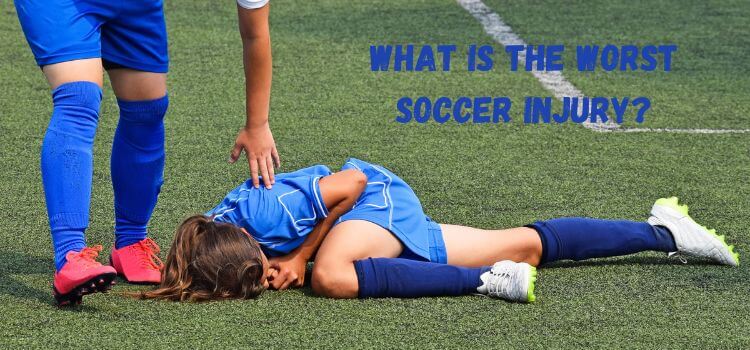As an Amazon Associate, I earn from qualifying purchases
The beautiful game of soccer has many different roles and positions, each adding to the team’s success differently. Understanding these positions and their significance can enhance one’s appreciation of the game and improve overall performance. But what is the best position in soccer? This comprehensive overview breaks down each position, highlighting their roles, responsibilities, and required skills to help determine the best for you or your team.

Goalkeeper (GK)
Role and Responsibilities
The goalkeeper is the last line of defense and the first line of attack. Their primary duty is to stop the other side from scoring by stopping, diverting, or capturing shots on goal when positioned in the goal.
Key Skills Required
A goalkeeper needs excellent reflexes, agility, and the ability to read the game. Strong communication skills are also vital as they direct the defense and organize the team’s response to the opposition’s attacks.
Defenders
Center Backs (CB)
Role and Responsibilities
Center backs are the backbone of the defense, positioned in the central area of the defensive line. Their primary duties include blocking attacks, making tackles, and winning aerial duels.
Key Skills Required
Center backs must possess a solid physical presence, tactical awareness, and excellent heading ability. Good passing skills are also crucial for initiating plays from the back.
Fullbacks (LB/RB)
Role and Responsibilities
Fullbacks play on the left and right sides of the defense. They are responsible for defending against wingers and supporting the midfield and attack.
Key Skills Required
Speed, stamina, and the ability to read the game are essential. Fullbacks must also be good at crossing and passing to support offensive plays.
Wingbacks (LWB/RWB)
Role and Responsibilities
Wingbacks are a hybrid of fullbacks and wingers. They have greater leeway to join the attack since they are marginally higher up the pitch than standard fullbacks.
Key Skills Required
Wingbacks require excellent stamina, speed, and dribbling skills. They need to balance their defensive duties with an ability to contribute effectively to the attack.
Midfielders
Central Midfielders (CM)
Role and Responsibilities
Central midfielders are the team’s engine room, covering large pitch areas to support defense and attack. They often dictate the tempo of the game.
Key Skills Required
Great vision, passing ability, and tactical awareness are crucial. Central midfielders also need stamina and the ability to tackle and intercept the ball.
Defensive Midfielders (CDM)
Role and Responsibilities
Defensive midfielders shield the defense, breaking up opposition plays and providing a link between the defense and the rest of the team.
Key Skills Required
Strong tackling, positioning, and awareness are vital. A CDM should also be good at short and long-range passing.
Attacking Midfielders (CAM)
Role and Responsibilities
Attacking midfielders play closer to the opposition’s goal, focusing on creating scoring opportunities and sometimes scoring themselves.
Key Skills Required
Creativity, vision, and excellent ball control are essential. They should also have good shooting and passing skills.
Wide Midfielders (LM/RM)
Role and Responsibilities
Wide midfielders operate along the flanks, providing width to the team’s play and delivering crosses into the box.
Key Skills Required
Speed, dribbling, and crossing abilities are crucial. They also need to track back and help in defense when required.
Forwards
Strikers (ST)
Role and Responsibilities
Strikers are primarily responsible for scoring goals. They are positioned closest to the opposition’s goal and the main target for attacking plays.
Key Skills Required
Excellent finishing, positioning and the ability to make quick decisions are crucial. Strikers also need good heading ability and composure under pressure.
Wingers (LW/RW)
Role and Responsibilities
Wingers play on the left and right flanks, beating defenders, delivering crosses, or cutting inside to shoot.
Key Skills Required
Speed, dribbling, and the ability to deliver accurate crosses are vital. Wingers should also be able to track back and support their fullbacks.
Center Forwards (CF)
Role and Responsibilities
Center forwards often play slightly behind the central striker, linking up play and creating scoring opportunities.
Key Skills Required
Physical solid presence, reasonable ball control, and the ability to make key passes are essential. Center forwards should also have a good understanding of the game and positioning.
The Versatile Role of a Sweeper (SW)
Role and Responsibilities
The sweeper is a flexible defender who operates behind the defensive line, cleaning up loose balls and covering for other defenders.
Key Skills Required
Excellent reading of the game, tackling, and positional sense are crucial. Sweepers also need to be good communicators to organize the defense effectively.
Evaluating the Best Position
Personal Attributes and Skills
Choosing the best position in soccer depends mainly on an individual’s attributes and skills. Speedy and agile players might excel as wingers or fullbacks, while those with solid tactical awareness and passing ability could thrive in midfield.
Team Strategy and Formation
The team’s strategy and formation can also influence the best position. Some formations prioritize certain positions over others, impacting where a player might be most effective.
Conclusion
Determining the best position in soccer is a nuanced task that depends on various factors, including personal skills, team needs, and tactical setups. Each position brings unique challenges and rewards, contributing to the beautiful complexity of the game.
FAQs
Because they must run a lot both on defense and offense, fullbacks and wingbacks are frequently regarded as the positions with the highest physical demands.
Strikers typically score the most goals, as their primary role is to finish off attacking plays.
Versatile players can excel in multiple positions, providing valuable team flexibility.
Beginners might start in midfield, as it allows them to experience the game’s defensive and offensive aspects.
Coaches assess players’ skills, physical attributes, and tactical understanding to determine the best positions for them within the team’s strategy.
Read Our More Articles
- What is the Hardest Position in Soccer? An In-Depth Look
- What Soccer Position Should I Play Quiz?
- What is the Most Important Position in Soccer? In-Depth Analysis
As an Amazon Associate, I earn from qualifying purchases


